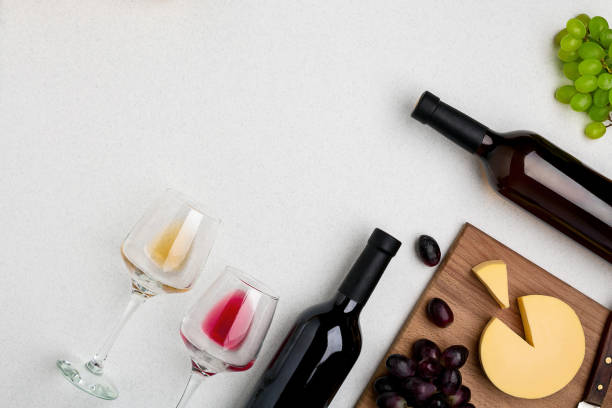Food and wine pairing is like embarking on a cooking journey that makes your taste buds sing. Think about biting into a perfectly grilled steak while the rich flavors of the steak mix with the strong notes of a bold Cabernet Sauvignon.
This experience is all about balance. The tastes dance with each other, making a harmony that makes every bite and sip better.
Learn how to balance the flavors in this wine pairing guide. This is true whether you’re an experienced expert or just starting. Let’s raise a glass to the road ahead and toast!
Match Intensity
For the best eating experience, make sure the wine’s intensity meets the food’s flavors.
For example, a light, crisp white wine like Sauvignon Blanc or Pinot Grigio goes well with a delicate white fish. The wine brings out the gentle taste of the fish.
If you want to balance out the strong tastes of a rich, fatty steak, you should drink a full-bodied red wine like Cabernet Sauvignon or Malbec. This careful match makes both the food and the wine taste better, making for a great meal.
Consider Acidity
One of the food and wine tips you should consider is acidity in wine. It is crucial for balance and the overall taste experience.
Higher acidity wines can cut through rich, fatty foods, cleansing the palate and creating a refreshing contrast. This characteristic enhances the dish’s flavors.
Imagine a zesty Sauvignon Blanc with creamy goat cheese. The wine’s acidity balances the cheese’s richness, creating a delightful combination. This interplay of flavors and textures makes wine pairing an art form.
Sweetness and Spice
When pairing with spicy foods, choose wines with a hint of sweetness to balance the heat.
A slightly sweet Riesling or Gewürztraminer complements spicy Asian dishes, cooling the palate without overwhelming it. These wines have refreshing acidity and fruity notes that enhance the spices, making each bite enjoyable.
The residual sugar also soothes the palate, allowing you to savor the dish’s complex flavors. Whether enjoying spicy Thai curry or Szechuan cuisine, these wine choices will elevate your culinary experience.
Complement or Contrast
You can complement or contrast the flavors in your food and wine. For instance, pairing Chardonnay with rich lobster enhances similar flavors. It creates a seamless taste by matching creamy textures and subtle notes.
Contrasting pairings, such as tangy blue cheese with sweet Port, balance sharp notes with smooth undertones, resulting in a delightful interplay.
Both approaches offer unique ways to elevate your dining experience, suiting different preferences.
Umami Balance
Umami-rich foods like mushrooms, soy sauce, and aged cheeses can sometimes clash with certain wines, creating a metallic taste. Pair umami dishes with wines that have moderate acidity and tannins, like Pinot Noir, to balance the umami effect.
Umami balance is also essential when considering the best Tennessee ciders for your pairings. These ciders often possess a complexity that can elevate umami-rich dishes, providing a perfect balance of sweetness and acidity.
The Final Sip: Mastering the Art of Food and Wine Pairing
When you find the right food and wine pairing, it makes your taste buds and your soul happy. Over time, trying out different tastes and mixtures will help you understand how to make meals that go well together.
It’s important to remember that the best wine and food combinations make each meal a unique culinary trip. Cheers to your gained knowledge and all the tasty experiences that are to come!
Does this article help you? Explore our website for more useful guides.




